Hilma af Klint: The Fascinating Story of an Abstract Art Pioneer
Ahead of her time, this artist created hundreds of enigmatic paintings where the invisible became visible. Unseen for many years, her work has now vindicated her as one of the pioneers of abstract art
It was 1935, and Russian painter Wassily Kandinsky wrote a letter to his New York gallery owner, where he claimed the authorship of his first abstract painting: a piece painted in 1911. “Without doubt, it is the first abstract painting in the world (...) it is, in other words, a historical painting”, said the letter.
Nonetheless, in Sweden, in 1906, a woman called Hilma af Klint had already been painting abstract compositions in which line, color, and geometrical shapes had been the main subjects. However, her story and her contribution to abstract art remained unknown until the 1980s, when an exhibition taking place at the Los Angeles County Museum of Art (LACMA) finally vindicated her role.
Why doesn’t her name resonate when we think of this art movement? What happened that kept her prolific production unknown, unlike Mondrian, Malevich, or Kandinsky’s works? Here is the fascinating story behind one of the pioneers of abstraction.
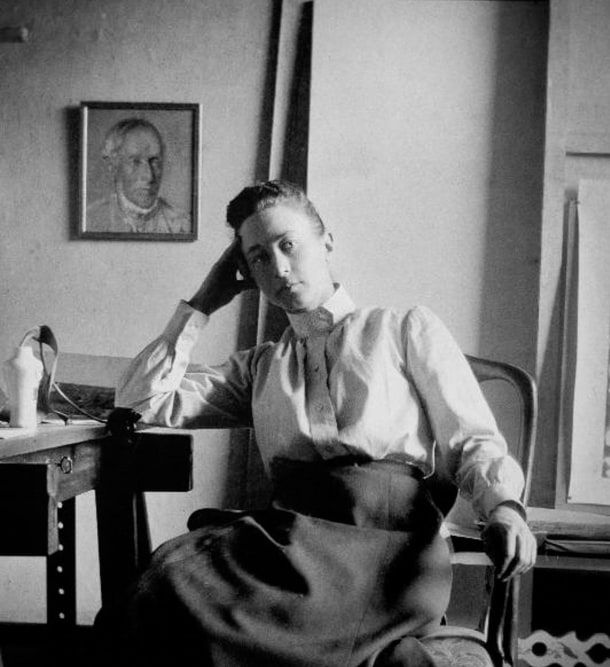
The early years
Hilma af Klint was born on the 26th of October 1862 in Sweden. The daughter of a Navy admiral, Hilma lived a comfortable life. From an early age, she had access to scientific knowledge through the extensive library of her father, who was an occasional violin player and mathematician.
In 1880, she attended Stockholm's Technical Institute, where she studied portrait painting. In the same year, her younger sister Hermina died. This tragic event awakened her spiritual side and got her interested in spiritism, in a quest to find answers to her questions. In the 19th century, this religious movement was at its peak, and many believed in the human ability to communicate with the afterlife.
In 1882, she began her painting studies at Stockholm’s Royal Academy of Fine Arts and spent five years studying drawing and portrait and landscape painting. The Swedish Royal Academy was one of the few places in Europe where women were allowed to study. Her generation was one of the first to receive an academic education.

The start of her path to abstraction
Like many of her contemporaries, Hilma af Klint did not stop looking for spiritual knowledge. Hers was an exciting era. Scientific discoveries, such as radio waves or X-rays, destroyed many of the conventional beliefs and opened the doors to the possibility of exploring new realities beyond the five senses.
It was 1896, and Hilma and four other female artists created an esoteric group called 'Friday Club' or 'The Five’. The group was the seed of her abstract painting. The women got together every Friday and organized séances, sessions including the study of the New Testament, meditation exercises, prayer, and spiritism. They recorded the messages received from the afterlife and practiced experimental automatic writing and drawing.
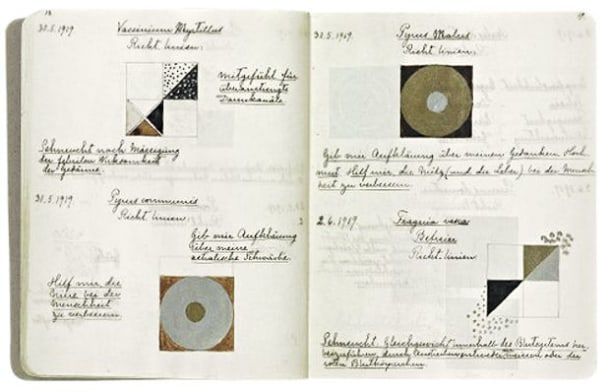
During these sessions, Hilma and her companions said to establish contacts with spiritual beings called ‘The High Masters’.
In 1906, ten years after the group started, the artist received a special commission. In her diary, she explained that a spirit called Amaliel gave her an assignment: to create ‘Paintings for the Temple’. “Amaliel offered me a job, and I accepted immediately”, af Klint wrote in her notebook.
Thus, the artist started painting the most extensive work of her life: 193 paintings completed over two periods until 1915. In the first period, which lasted until 1908, she painted 111 of the pictures. The ruthless pace at which she worked is described in her diaries: "The pictures were painted directly through me, without any preliminary drawings, and with great force. I had no idea what the paintings were supposed to depict; nevertheless, I worked swiftly and surely, without changing a single brush stroke.”
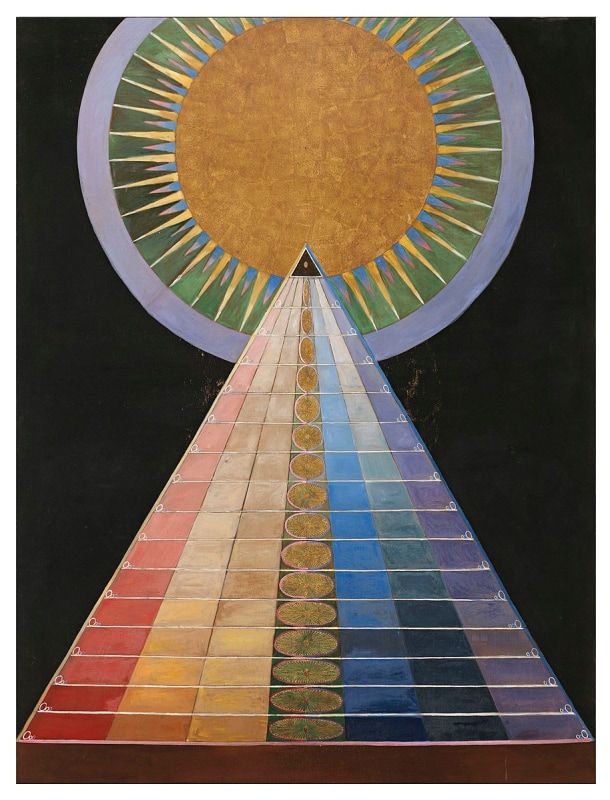
Hilma was convinced that reality was not limited to the physical world and that there existed another world as real and truthful as the material one. Unlike other abstract artists, af Klint did not want to ‘dissolve reality’ but to make visible what is invisible and show everything that exists beyond the physical world we are accustomed to.

She used letters, pastel colors, lines, spirals, and various geometric shapes, such as concentric circles, ellipses, and triangles, to achieve this. Her symbology was also very rich, and different motifs are repeated in her work: seashells, snakes, lilies, rose crosses, swans, and letters. The letter ‘U’, for example, meant "spirit" and 'W' symbolized “matter".
She also used the color blue to represent femininity and yellow for masculinity. The artist was interested in representing duality in other concepts: macrocosms and microcosms, light and darkness, the origin and end of the world.
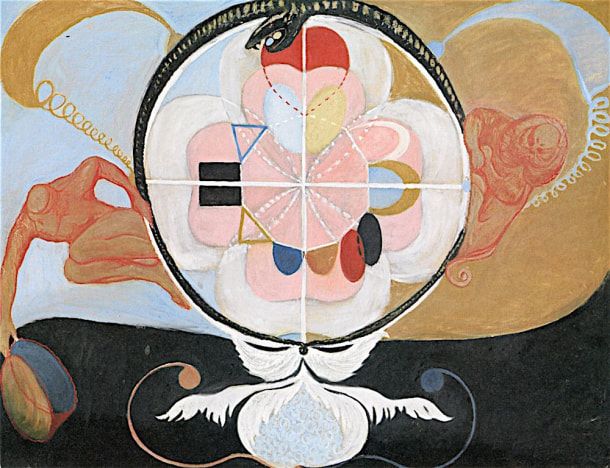
In 1908, Rudolf Steiner, leader of the German Anthroposophical Society, visited af Klint’s studio where he saw the ‘Paintings for the Temple’. His reaction was unexpected, and he advised her not to show the paintings for 50 years.
Perhaps her most spectacular paintings are known as ‘The Ten Largest‘, ten large pieces where Hilma af Klint wished to depict life phases, from childhood to old age, through abstract compositions.
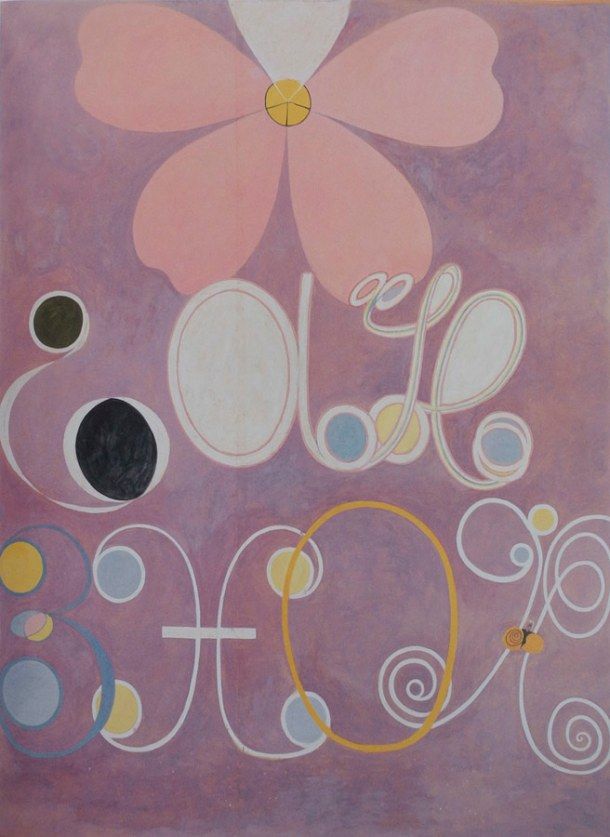
In 1908, Hilma took a four-year break to look after her mother, who had become blind. In 1912, she picked up her ‘Paintings for the Temple’ again and completed them in 1915.
A year later, she painted the 'Parsifal' series and, in 1917, the 'Atom’ series.
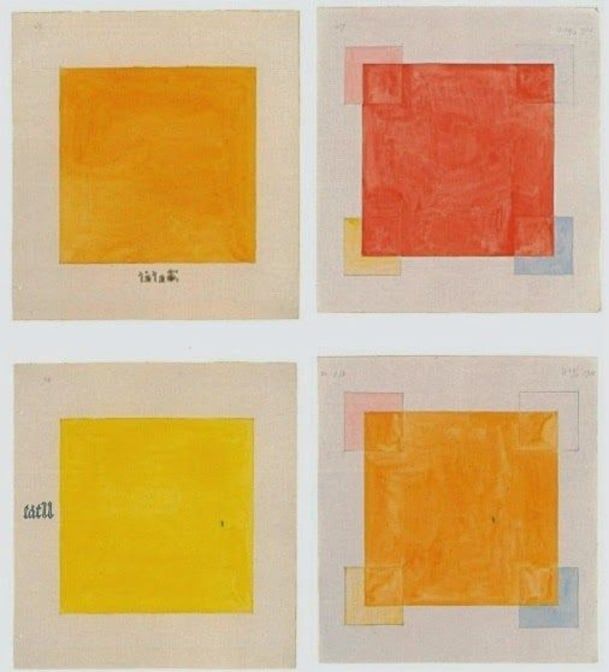
In 1944, Hilma af Klint died in a traffic accident and left behind more than 1300 abstract artworks, thousands of drawings in her sketchbooks, and a promise from her heir: her work was not to be shown until at least 20 years had passed since her death. The artist was afraid that the people of that generation would not understand her abstract work.
Her full artistic production remained unseen until 1986 when it was exhibited in a museum for the first time. This marked the discovery of one of abstract art’s pioneers.
English version by @acesarato
You may also be interested in:
- Sketchbook: 5 Great Masters Who Sketched
- Jean-Michel Basquiat: A Virtual Tour
- 15 Realistic Portrait Illustrations That Make an Impact





1 comment
jackfruit27
Cool lady and well we have the same birthday! But wow- she just blew me away with her ideas, thoughts and imagination. Cliche but - so ahead for her time.